Unlocking AWS GuardDuty: Automated Security Intelligence for Modern Cloud Threats
- Nitin Yadav
- Blog
About
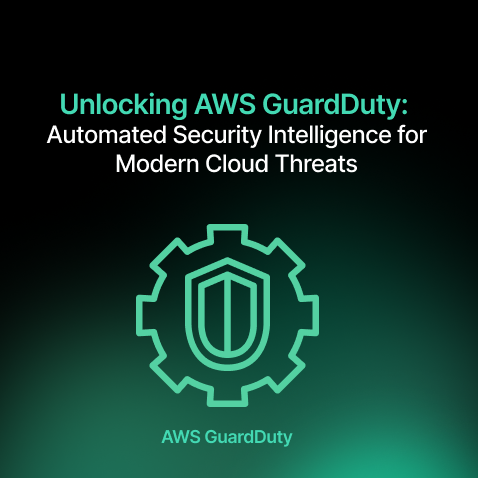
AWS GuardDuty delivers intelligent, automated threat detection for AWS environments—securing workloads with minimal setup, continuous monitoring, and smart insights.
Industries
- AWS, Cloud Threats, GuardDuty, Secuity Intelligence
Share Via
Why Threat Detection Matters
For organizations that operate AWS environments, always reacting to security alerts or watching for undetected threats can be too much. AWS GuardDuty offers an automated defense layer of threat detection to enable organizations to be ahead of the potential threats. It is an intelligent monitoring tool that checks for unusual behavior and triggers alarms before any small problems become a huge security issue. That kind of vigilance is critical, here’s why.
What is AWS GuardDuty?
Think of GuardDuty as the cloud equivalent of a guard dog—it’s wiser, doesn’t sleep, and leaves no fur behind. It’s a threat detection feature designed to pick up on suspicious behavior and possible threats in and around the AWS accounts. Threats like malware, unauthorized access, crypto mining, and data exfiltration—without the hassle of setup and maintenance involved with legacy security products.
What Types of Threats Can GuardDuty Detect?
A broad array of security threats can be identified by GuardDuty. Some of the most common ones are:
- Access attempts without authorization: A case in point is numerous failed attempts to log in from a location regarded as suspicious.
- Data activity that is out of the norm: Sensitive information S3 buckets being unexpectedly read, accessed, or downloaded.
- API actions that do not comply with policies: This could be defined by abnormal increases in attempts to escalate privileges.
- Counterintelligence movements: Someone surveilling and mapping out attack routes to try and figure out what may be under attack.
- Resources that have been compromised: There are indications that an EC2 instance, Lambda function or account is going to be abused, normally in activities like crypto mining.
These are the primary threats that are surfaced early on by GuardDuty, drawing meaningful conclusions.
Getting Started
The cool thing about GuardDuty is how easy it is to set up. Picture this:
- Log into the AWS Console.
- Search for “GuardDuty.
- Select the Amazon GuardDuty – All features option.
- Choose Get started.
- On the Welcome to GuardDuty page, view the service terms. Choose Enable GuardDuty.
No agents to install, no rulebooks to slog through, and no mountain of custom logic. The service immediately starts pulling in logs and begins patrolling for baddies.
Multi-Account Environments: Centralized Security
Numerous companies have a complicated environment of AWS accounts. GuardDuty streamlines security by enabling an individual delegated administrator account to handle findings for the entire organization, which is a lifesaver for visibility (and sanity). Centralized management makes it much easier to see what’s going on and also makes things easier to manage—particularly when combined with AWS Organizations.
Features That Make GuardDuty Shine
I sometimes impress myself when I catch the subtle, not-so-obvious perks. Here’s a handful that I think deserve more hype:
- Sometimes it’s easy to overlook the subtle perks that truly make a difference. Here’s a handful that deserve more attention.
- Managed threat intelligence feeds: GuardDuty pulls from AWS and trusted partners, constantly updating its knowledge of malicious IPs and attack patterns—no manual updates needed.
- Continuous monitoring, low overhead:: No need to tune or maintain infrastructure—GuardDuty runs quietly in the background, 24/7.
- Integrates with AWS Security Hub and EventBridge: Findings can be streamed to custom dashboards or wired into automated responses. For example, a Lambda function can be triggered to lock a suspicious account based on a GuardDuty alert. Satisfyingly efficient.
Finding suppression and filtering: Alerts can be fine-tuned to avoid unnecessary noise. Adjustments improve over time as patterns and priorities become clearer.
GuardDuty's Core Detection Capabilities
Classic threat detection tends to evoke visions of never-ending logs and flooding alerts. GuardDuty shifts that paradigm. As a machine learning-powered threat detection service with carefully curated intelligence feeds, it detects everything from hijacked credentials to reconnaissance operations and crypto mining attacks—with little or no manual effort.
And it continues to change. What was once a log-based detector now offers protection for an increasing number of AWS services:
S3 Protection (Amazon Simple Storage Service)
S3 buckets typically contain sensitive information and are the primary target for attackers. GuardDuty constantly scans S3 data events to bring to light out-of-the-ordinary actions—such as unauthorized downloads, out-of-place API calls, or access from unknown IPs. Public bucket exposures and credential disclosures can be caught in time before they boil over as full-fledged data breaches.
EKS Protection (Elastic Kubernetes Service)
Kubernetes automates container orchestration but adds novel security issues. GuardDuty EKS protection detects Kubernetes clusters for unauthorized use, such as unusual privilege escalations and suspicious pod activity. Instead of needing extensive Kubernetes knowledge, it makes detection easier by converting complex logs to understandable, actionable results.
Runtime Monitoring
Visibility into running workloads is essential, as threats act more and more at runtime. GuardDuty’s runtime inspection monitors running EC2 instances and container workloads, identifying indicators of compromise like process injection, atypical port activity, or crypto mining. Alerts are contextual and specific, providing more than generic warnings.
Malware Protection
Malware is a persistent threat in all environments. GuardDuty now provides malware detection by scanning EBS volumes through automated snapshot analysis. This comprises detection of ransomware, rootkits, and trojans—without manual tools or offloading into external systems.
RDS Protection (Relational Database Service)
Databases contain sensitive data and are the target of abuse. GuardDuty’s RDS protection identifies suspicious SQL behavior, anomalous access patterns, and likely credential misuse in Amazon RDS. In environments that are under regulatory compliance scrutiny, this visibility supports a robust compliance stance.
Lambda Protection
Serverless architectures, though potent, can prove challenging to monitor. GuardDuty provides protection for AWS Lambda functions, identifying unauthorized calls, misuse of permissions, and unusual activity—whether the workload is automation scripts, microservices, or ETL processes.
Through support for an expanding number of AWS services, GuardDuty goes beyond the conventional approach of monitoring, providing context-aware threat detection without having to contend with infrastructure management or hand-crafting detection logic.
How Much Does It Cost?
GuardDuty charges depend on the amount of data it processes, such as VPC flow logs, DNS requests, and CloudTrail activity. The advantage? No upfront investments or long-term contracts are needed; billing mirrors usage. For many organizations, this is a practical solution, particularly when compared to legacy security appliances that tend to involve high upfront costs and convoluted configurations.
Helpful Insights and Cautions
Not every alert is a crisis. Learn to treat GuardDuty’s findings as the starting line for investigation, not the finish. A couple of lessons learned the hard way worth sharing:
- Enable in all regions: Threats do not always appear where anticipated. Some attackers specifically attack less frequented areas—do not leave the rear door unlocked.
- Integrate with response automation: Integrating GuardDuty with automated response pipelines can be a timesaver. When action is triggered automatically by alerts, response time plummets.
- Review findings regularly: It’s convenient to set it and forget it, but they should review regularly to identify patterns before issues arise. Waiting until an incident occurs is like patching a roof after the storm.
- Cost awareness: In big volumes, the data scanned by GuardDuty can accrue. Adjusting the log sources and tweaking thresholds will help keep expenses under control without compromising visibility.
Final Thoughts
Turning on AWS GuardDuty feels a bit like flipping on a quiet alarm system in the background—something that doesn’t get in the way, but makes a big difference. It offers a sense of assurance that someone or something is always paying attention, even when no one’s actively watching. The best approach? Switch it on, adjust the settings as needed, keep an eye on what it finds, and let it do its thing. That frees the teams to focus on building instead of constantly worrying about cloud security. In the end, that’s a win for everyone involved.
Frequently asked questions
AWS GuardDuty is a threat detection service that monitors AWS accounts for suspicious activity like unauthorized access, malware, or data breaches. It helps secure cloud workloads without manual setup, using machine learning and threat intelligence to detect threats in real time.
GuardDuty uses machine learning and threat intelligence to analyze AWS logs like CloudTrail and VPC flow logs. It identifies unusual behavior or known threats, then generates alerts to help teams quickly respond and protect AWS resources from unauthorized or malicious activity.
.
Yes, it’s simple. With no agents or custom rules needed, GuardDuty can be enabled directly from the AWS Console. It immediately begins monitoring AWS services and generating security findings, making it ideal for quick, low-maintenance cloud threat detection.
GuardDuty can detect brute-force attacks, data theft, crypto mining, unauthorized access, malware activity, and policy violations. It also identifies reconnaissance behavior and compromised AWS resources, making it a versatile security layer for modern cloud environments.
Yes. In multi-account AWS environments, GuardDuty allows centralized monitoring through a delegated administrator. This setup makes managing findings across all accounts easier and ensures complete visibility into security threats across an entire AWS organization.
Yes. GuardDuty monitors S3 for unusual data access and EKS for suspicious Kubernetes activity like privilege escalation. It protects sensitive data and container workloads by automatically detecting potential threats with minimal manual intervention.
GuardDuty charges based on data processed, including CloudTrail and VPC logs. There’s no upfront cost or long-term contract. You pay for what you use, making it cost-effective compared to traditional security tools that often require expensive hardware or licenses.
Yes. GuardDuty uses automated snapshot analysis to scan EBS volumes for malware like ransomware or trojans. It provides detection without external tools or manual scans, adding strong malware protection to EC2 instances and other cloud workloads.
Yes. GuardDuty integrates with AWS services like EventBridge and Lambda. It can trigger automated actions, such as isolating compromised instances or sending alerts, helping teams respond faster to threats with minimal manual effort.
Yes. GuardDuty supports security monitoring across AWS services, helping organizations meet compliance standards like HIPAA or PCI. It enhances visibility into threats and supports continuous security checks, making it a valuable tool for regulated industries.
Related Posts
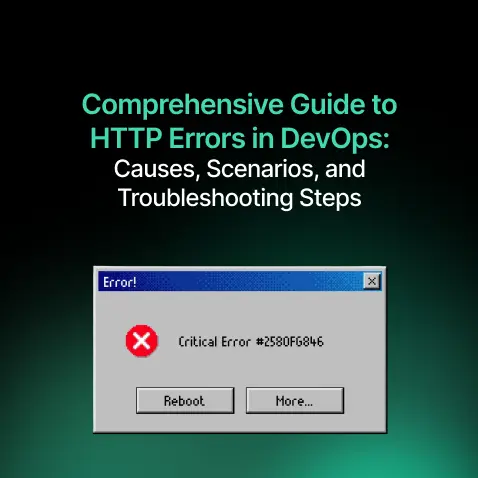
Comprehensive Guide to HTTP Errors in DevOps: Causes, Scenarios, and Troubleshooting Steps
- Blog

Trivy: The Ultimate Open-Source Tool for Container Vulnerability Scanning and SBOM Generation
- Blog
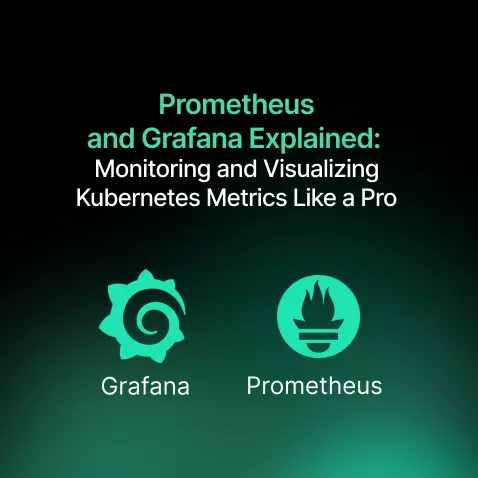
Prometheus and Grafana Explained: Monitoring and Visualizing Kubernetes Metrics Like a Pro
- Blog
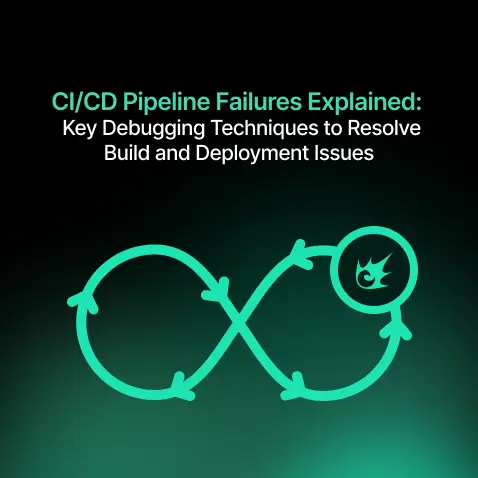
CI/CD Pipeline Failures Explained: Key Debugging Techniques to Resolve Build and Deployment Issues
- Blog
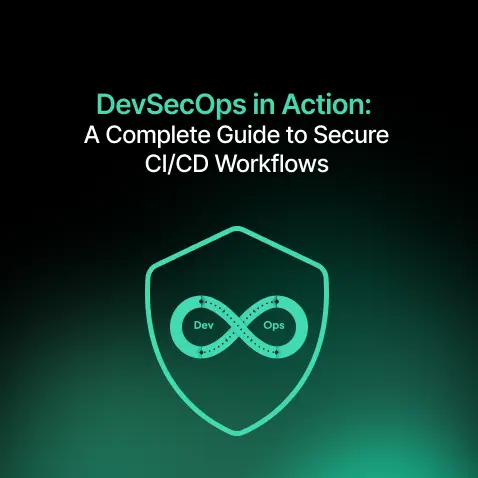
DevSecOps in Action: A Complete Guide to Secure CI/CD Workflows
- Blog
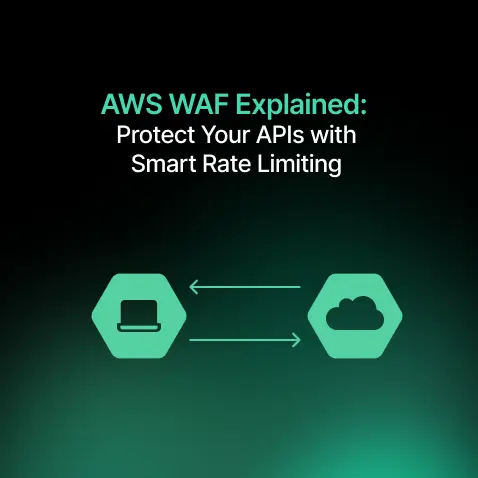
AWS WAF Explained: Protect Your APIs with Smart Rate Limiting
- Blog

